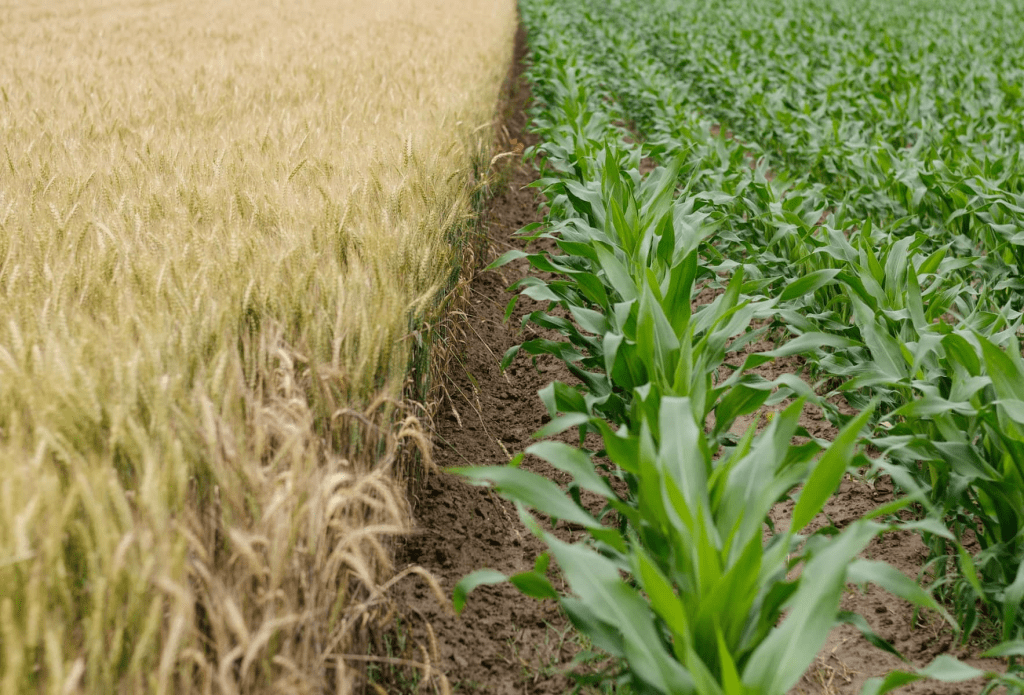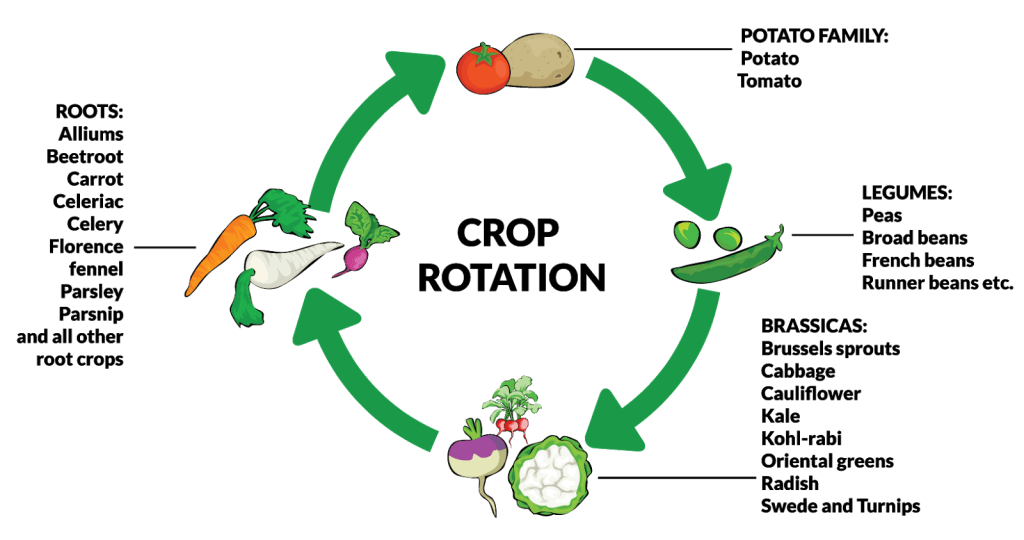
Table of Contents
- Introduction
- Climate and Soil Conditions
- Market Demand and Profitability
- Crop Rotation and Sustainability
- Other Key Factors in Sustainable Farming
- Conclusion
- References
Introduction
As the planting season approaches, farmers must make crucial decisions about which crops to cultivate. This decision is not just about preference but hinges on several factors, including environmental conditions, market demand, and sustainability practices. Choosing the right crops can determine the success or failure of a farming season, impacting yield, profitability, and long-term soil health.
In recent years, Nigerian farmers have faced challenges such as unpredictable weather patterns, soil degradation, pest infestations, and fluctuating market prices. These factors make it essential to take a strategic approach to crop selection. A well-informed decision ensures that farmers can maximize their resources, optimize productivity, and remain competitive in the agricultural market. Understanding the relationship between crops and their growing environment is key to achieving higher yields and reducing losses.

At HTSF Global, we recognize the importance of informed decision-making in agriculture. As a trusted agricultural resource, we provide farmers with access to high-quality seeds, farming inputs, and expert insights to enhance productivity. This guide will outline critical factors to consider when selecting crops for the planting season, equipping farmers with the knowledge they need to make sound agricultural choices.
Climate and Soil Conditions
Nigeria’s diverse climate and soil conditions significantly impact the types of crops that can be cultivated successfully. The country spans multiple agro-ecological zones, including the rainforest, savannah, and semi-arid regions, each with unique climatic and soil characteristics. Understanding these conditions is crucial for maximizing crop yields and ensuring sustainable farming practices.

Climate factors such as temperature, rainfall, humidity, and seasonal variations influence crop growth. Some crops require high rainfall and humidity, while others thrive in drier conditions. Farmers should assess their local climatic conditions before choosing crops.
- Southern Nigeria (Humid Rainforest Zone): Covering states like Lagos, Ogun, Ondo, Rivers, and Cross River, have a humid rainforest climate with heavy rainfall and warm temperatures. This region is perfect for tree crops like cocoa, oil palm, and rubber, as well as tubers like yam and cassava. Farmers also cultivate vegetables such as pepper, okra, and tomatoes, alongside fruits like pineapple, bananas, citrus, and avocado.
- Central Nigeria (Guinea Savannah Zone): States like Kwara, Kogi, Benue, and Niger, falls within the Guinea Savannah, a zone with moderate rainfall that supports both arable and tree crops. Staple crops like maize, rice, cassava, and soybeans thrive here. Vegetables such as tomatoes, garden eggs, and cucumbers grow well, while mangoes, cashews, and guavas are some of the region’s prominent fruits.
- Northern Nigeria (Sudan and Sahel Savannah Zones): Covering states like Kaduna, Kano, Katsina, and Borno, has a Sudan and Sahel Savannah climate, characterized by low rainfall and dry conditions. Farmers in this zone focus on drought-resistant crops such as millet, sorghum, groundnuts, and cowpeas. Onions, peppers, and tomatoes are among the vegetables cultivated, while fruits like watermelon, dates, and tamarind thrive despite the arid conditions. Irrigation plays a crucial role in sustaining agriculture here, as farmers use water from rivers and dams to grow crops year-round.
Farmers should consider seasonal variations and the length of the growing period for their selected crops. In areas with short rainy seasons, such as the Sudan and Sahel Savannah zones in Northern Nigeria, early-maturing crop varieties are more suitable. In contrast, regions with longer rainy seasons, such as the Guinea Savannah (Central Nigeria) can support longer-duration crops. Understanding these climatic variations allows farmers to plan their planting schedules effectively, ensuring better yields and sustainability.
Soil Quality and Suitability
Soil type is another crucial factor in determining crop suitability. Conducting soil tests to assess nutrient content, pH levels, and drainage capacity is recommended. Some common soil types and their recommended crops include:
- Loamy Soil: Ideal for most crops due to its balanced mix of sand, silt, and clay, which retains moisture while allowing adequate drainage. Crops like maize, tomatoes, and vegetables thrive in loamy soil.
- Clay Soil: Holds water well but may require proper drainage techniques. Rice and sugarcane perform well in clayey soils with high water retention.
- Sandy Soil: Drains quickly and is well-aerated but may require organic amendments to improve fertility. Suitable for crops like groundnuts, carrots, and watermelons.
- Laterite Soil: Found in tropical regions like the Humid Rainforest Zone with iron-rich content. Requires soil management practices to support crops like cassava, millet, and legumes.

By carefully evaluating climate and soil conditions, farmers can select crops that will thrive in their specific regions, leading to increased productivity and sustainability.
Soil quality also plays a significant role in plant growth. Conducting soil tests before planting helps determine key properties such as pH levels, nutrient content, and moisture retention capacity. Farmers should aim to select crops that match their soil characteristics. For example:
- Maize grows best in well-drained sandy loam soils with moderate moisture retention.
- Cassava is highly adaptable but performs optimally in loamy soil rich in organic matter.
- Rice requires swampy or waterlogged areas, making it ideal for regions with high rainfall or access to irrigation systems.
- Groundnuts prefer sandy soils with good drainage to prevent fungal infections.
By aligning crop selection with climate and soil conditions, farmers can enhance productivity and minimize losses due to unsuitable growing environments.
Market Demand and Profitability
The success of any farming business depends not only on production but also on marketability. Farmers must consider consumer demand, crop pricing trends, and potential profit margins before deciding what to plant. Selecting high-demand crops ensures a ready market and maximizes returns on investment.
Understanding Market Demand
Market research is essential to identify crops with high demand at both local and international levels. Farmers should assess:
- Consumer Preferences: Staple foods such as rice, maize, and yam are consistently in high demand.
- Industrial Uses: Crops like soybeans, palm oil, and cassava are valuable for food processing industries.
- Export Potential: Certain crops, such as sesame, ginger, and cocoa, have strong export markets, providing lucrative opportunities for farmers.
- Seasonal Demand: Prices for perishable crops like tomatoes and peppers fluctuate throughout the year. Farmers can optimize profits by timing their production for peak market periods.

Economic Viability and Profitability
When selecting crops, farmers should analyze profitability based on production costs, selling prices, and post-harvest management. Factors to consider include:
- Production Costs: Consider expenses related to seeds, fertilizers, labor, and transportation.
- Storage and Shelf Life: Perishable crops require efficient storage facilities, while grains like maize and beans have longer shelf lives and can be sold when prices are favorable.
- Value Addition Opportunities: Processing raw agricultural products into finished goods can significantly increase profit margins. For example, processing cassava into garri or flour enhances its value and marketability.
Government Incentives and Market Access
Farmers should take advantage of government programs that promote specific crops through subsidies, grants, and guaranteed market access. For example:
- The Nigerian government supports rice production through initiatives like the Anchor Borrowers’ Program.
- Cassava production benefits from policies promoting local flour processing to reduce wheat imports.
- Agricultural cooperatives and partnerships with agribusiness firms can provide better market access and price stability.
By selecting crops based on strong market demand and economic viability, farmers can ensure sustainable income while contributing to national food security and economic growth.
In Nigeria, several crops consistently perform well in the market due to their diverse applications in food, industry, and exports:
- Soybeans are in high demand for processing into oil, animal feed, and soy-based food products.
- Maize is a staple food with multiple uses, including flour production, animal feed, and industrial processing.
- Tomatoes are widely consumed and have a strong domestic market, though post-harvest losses remain a challenge.
- Ginger and Sesame have growing export demand, particularly in Asian and European markets.
Farmers should also consider price stability and storage capabilities. Perishable crops like tomatoes may require efficient logistics and storage solutions, while grains such as maize and soybeans have longer shelf lives, allowing farmers to sell when prices are more favorable. Staying informed on market trends and government policies can help farmers make the best choices for profitability.
Crop Rotation, Agroforestry, and Sustainability in Agriculture
One of the key practices that farmers can adopt to enhance productivity and maintain soil health is crop rotation. Crop rotation involves growing different types of crops in the same field across multiple planting seasons. This method helps to prevent soil depletion, control pests and diseases, manage weeds, and ultimately support sustainable farming. Another key practice that helps achieve productivity and maintain soil health is agroforestry.
Agroforestry is the practice of integrating trees with crops and livestock on the same farmland. This method provides multiple benefits, including:
- Preventing soil erosion by reducing the impact of wind and water on farmland.
- Enhancing water retention, which is particularly beneficial in dry regions.
- Providing additional sources of income through fruits, nuts, timber, or animal fodder.
By combining crop rotation and agroforestry, Nigerian farmers can maintain higher yields, reduce costs, and build more resilient farms. These practices not only benefit individual farmers but also support food security and environmental conservation.
Benefits of Crop Rotation
1. Soil Fertility Improvement
One of the primary benefits of crop rotation is the enhancement of soil fertility. Different crops extract and replenish different nutrients from the soil. For instance, legumes such as cowpeas, soybeans, and groundnuts have the unique ability to fix atmospheric nitrogen into the soil through symbiotic relationships with nitrogen-fixing bacteria in their root nodules. This natural enrichment reduces the need for synthetic fertilizers, lowering production costs and minimizing environmental pollution. By alternating nitrogen-fixing legumes with nutrient-demanding cereals such as maize, and millet, farmers can maintain a balanced soil nutrient profile and ensure sustainable crop production.

2. Pest and Disease Control
Continuous cultivation of the same crop in a field can create a breeding ground for pests and diseases, leading to significant yield losses. Many crop-specific pests and pathogens thrive when their preferred host is planted repeatedly. For example, the maize stalk borer and cassava mosaic virus are more prevalent in monoculture systems. Crop rotation disrupts these cycles by introducing different plant species that pests and diseases do not favor. By rotating maize with non-host crops such as groundnuts or vegetables, farmers can naturally reduce the prevalence of harmful organisms, minimizing the need for chemical pesticides.
3. Weed Management
Weeds compete with crops for nutrients, water, and sunlight, often leading to lower yields. Different crops have distinct canopy structures and growth rates that affect weed suppression. For instance, crops with dense foliage, such as legumes, can effectively shade the soil and inhibit weed growth. Furthermore, some crops, such as sorghum, release allelopathic compounds that suppress weed germination and growth. By rotating crops strategically, farmers can naturally manage weed populations, reducing their reliance on herbicides and lowering production costs.
4. Enhanced Soil Structure and Erosion Control
Crop rotation also contributes to improved soil structure and erosion prevention. Deep-rooted crops like millet, sorghum, and sunflower enhance soil aeration by breaking up compacted layers, improving water infiltration, and increasing microbial activity. Additionally, cover crops such as legumes and grasses protect the soil surface from erosion caused by wind and water. This is particularly important in Nigeria, where heavy rains can lead to severe soil degradation. By integrating soil-conserving crops into rotation schedules, farmers can maintain robust soil health and prevent nutrient loss.
Practical Crop Rotation Strategies for Nigerian Farmers
To maximize the benefits of crop rotation, Nigerian farmers can adopt several practical strategies:
1. Legume-Cereal Rotation
One of the most effective rotation strategies involves alternating nitrogen-fixing legumes with cereals. A typical example is rotating cowpeas, soybeans, or groundnuts with maize, sorghum, or millet. This method not only replenishes soil nitrogen but also improves overall crop yields by reducing pest infestations and enhancing soil structure.

2. Root Crop Rotation
Root crops such as cassava, yam, and sweet potatoes deplete specific nutrients from the soil, leading to reduced productivity over time. To maintain soil balance, farmers should avoid planting these crops in the same field for consecutive seasons. Instead, they can rotate root crops with legumes or cereals to restore soil fertility and improve soil texture.
3. Intercropping for Soil Health
Intercropping, which involves growing two or more crops together in the same field, complements crop rotation by maximizing land use and improving soil health. A common intercropping practice in Nigeria is planting maize with beans, where the maize provides support for climbing bean varieties, while the beans enrich the soil with nitrogen. This approach enhances overall productivity while maintaining soil balance.
4. Seasonal Crop Planning
Farmers should plan their crop rotation schedules based on seasonal variations, market demand, and soil conditions. For instance, growing drought-tolerant crops like sorghum during dry seasons and water-intensive crops like rice during the rainy season optimizes resource use and improves resilience against climate change.
Other Key Factors in Sustainable Farming
1. Access to Quality Seeds and Inputs
The quality of seeds and agricultural inputs significantly impacts farm productivity. Using certified, high-yield seeds ensures improved germination rates, resistance to diseases, and better adaptability to local conditions. Farmers should source inputs from reputable suppliers like HTSFarms to guarantee quality and reliability. In addition, access to organic and synthetic fertilizers, pesticides, and soil enhancers is essential for maintaining soil fertility and crop health. Investing in quality inputs reduces crop failure risks and enhances overall farm output.
2. Water Availability and Irrigation
Water is a critical factor in agriculture, and different crops have varying water requirements. Some crops, such as vegetables, require frequent watering, while drought-tolerant crops like groundnuts and sorghum can thrive with minimal irrigation. Farmers should assess their water sources, including rainfall, boreholes, and irrigation systems, before selecting crops. Implementing efficient irrigation techniques, such as drip or sprinkler irrigation, can help conserve water and ensure adequate moisture levels for plant growth. Water management strategies are crucial for sustaining agricultural productivity, especially in regions with unpredictable rainfall patterns.

3. Government Policies and Support Programs
Government policies and agricultural support programs play a significant role in promoting sustainable farming practices. The Nigerian government provides various incentives, including subsidies on fertilizers, improved seeds, and farm equipment, to encourage farmers. Additionally, initiatives such as agricultural loans, grants, and extension services help smallholder farmers access resources and technical knowledge. Some crops, like rice and wheat, receive special funding under government programs to boost production and food security. Staying informed about these policies enables farmers to take advantage of available support and optimize their operations.
4. Pest and Disease Resistance
Pests and diseases pose a major challenge to agricultural productivity, causing significant losses if not managed properly. One effective approach is selecting crop varieties that are naturally resistant to prevalent pests and diseases. Improved cassava, yam, and maize varieties have been developed to withstand common threats such as the cassava mosaic virus and maize stem borers. Integrated pest management (IPM) practices, including crop rotation, biological control, and the use of resistant seed varieties, help minimize infestations. By implementing these strategies, farmers can reduce crop losses and enhance yield stability.
Conclusion
Crop rotation is a proven agricultural practice that contributes to sustainable farming by improving soil fertility, managing pests and diseases, reducing weed pressure, and enhancing soil structure. For Nigerian farmers, adopting crop rotation strategies can lead to increased yields, lower input costs, and improved environmental conservation. Additionally, access to quality seeds, irrigation planning, government support, and pest-resistant crops further enhance farm sustainability.
At HTSFarms, we provide farmers with high-quality seeds, farm inputs, and expert guidance on effective farming techniques. Need help selecting the right crops for your farm? Visit https://htsfarms.ng today!
References
- Nigerian Agricultural Extension and Research Liaison Services (NAERLS) Reports
- Federal Ministry of Agriculture and Rural Development (FMARD) Policies
- Food and Agriculture Organization (FAO) Crop Guides
- HTSFarms Expert Insights
